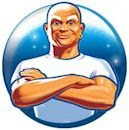It was an ordinary day. Reading a story in my latest AARP Magazine which is prefaced "A River of Souls" and is about a gentleman named Carl Koppleman. Seems that Carl works with death on a daily basis and can recreate a person's features who has been dead for days and whose facial features look nothing like what they used to look like. Carl is an accountant, but has the knack to recreate the features of those that have died. He is self-taught, but has the reputation among detectives, medical examiners and fellow sleuths for his portraitures of the dead. His portraitures are more than just a police mugshot for they are said to have a soulfulness to the eyes and a vivacity in the features, so that whatever death has done to them, he can make them look alive once again. His skill is uncanny and phenomenal. It took him years to hone his protraiture technique. He usually begins his facial drawings using photo-editing software and makes use of software known as Corel Photo-Paint to recreate faces that have been totally changed and recently used the software to draw the face of a fellow who had drowned days before. He studied the images of the drowned man and finished a portraiture that depicted a man with a glint in his eyes and a slight, thoughtful smile playing on his lips, wearing the beige t-shirt he'd been found in and backed by a beautiful summer sky. The portraiture was posted on social media and before long a staff member at a homeless shelter called saying she recognizes the man from the shelter. The man's family was notified and the deceased was identified. After examination, no foul play was found. Mr. Koppleman is a perfectionist and strives to use his god-given gift to create characterizations that can help identify faces that have been altered by time or other circumstances. The nameless dead present an unending river of tragedy for families all over the world and someone such as Mr. Kollpeman can help solve many situations, whether they be crimes or accidents. I'm sure that the torment that many face when not being able to find a loved one might be comforted slightly by using Mr. Koppleman's skills which have helped in hundreds of cases.
 |
| Scans of nameless people |








































